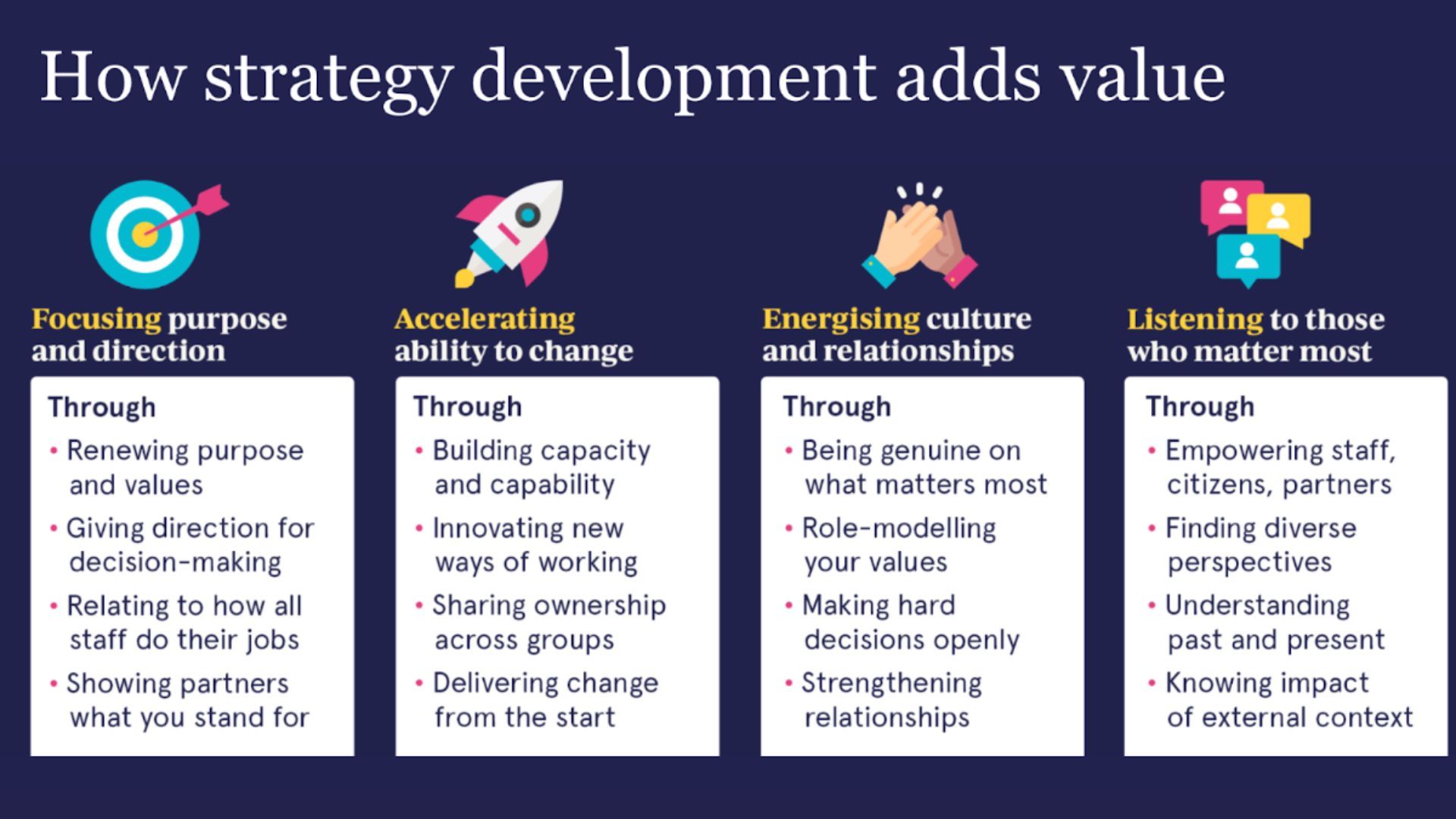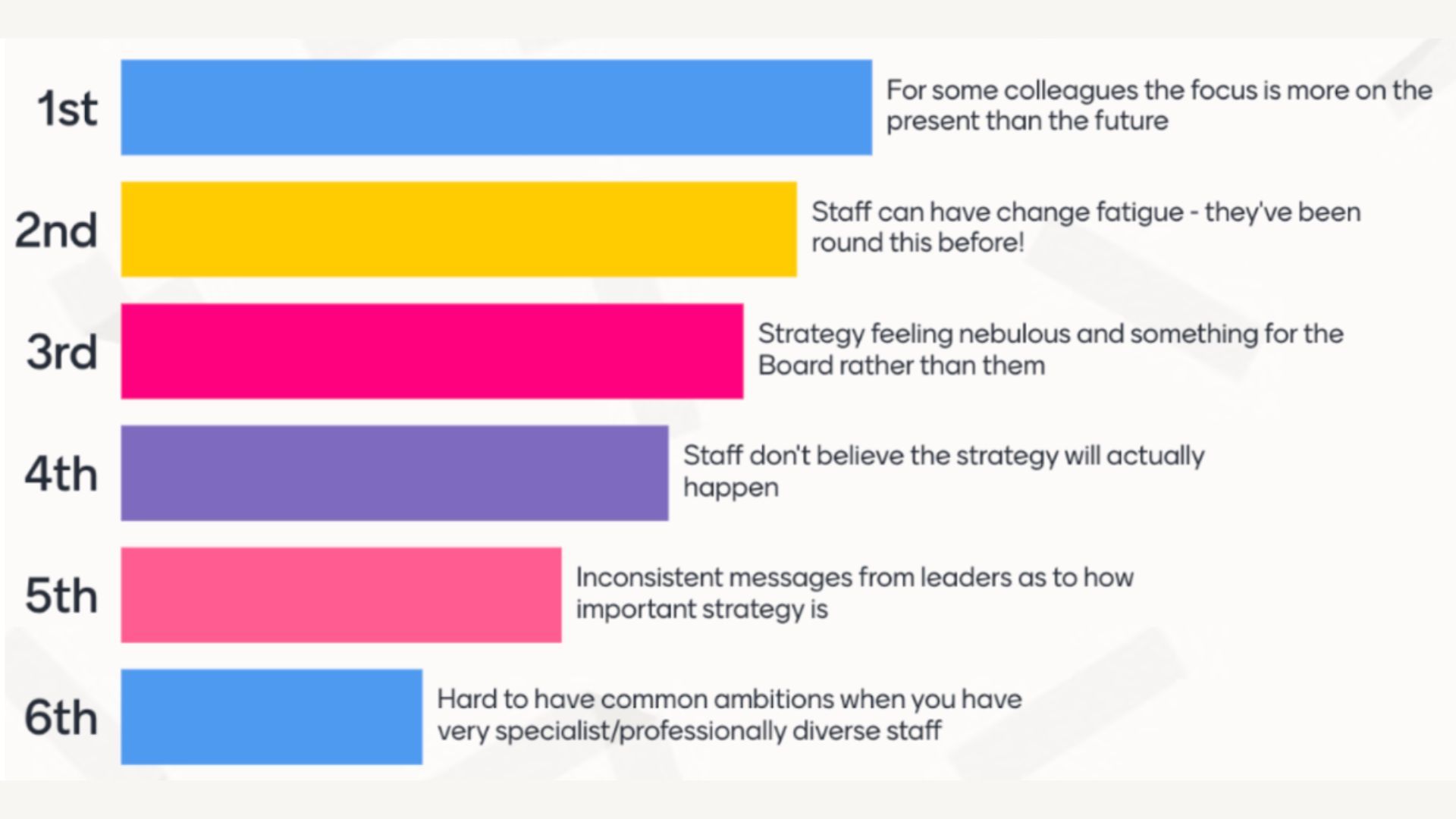Escaping the darkened room: how staff can own a strategy
One phrase dominates how we think strategy is created: documents being written in darkened rooms. Rich Taunt explores what that can tell us about how strategy needs to improve.
One phrase dominates how we think strategy is created: documents being written in darkened rooms. It came up several times at our recent Strategy Clinic, the first event in a series on how to solve strategy’s trickiest problems.
So why has the metaphor stuck, and what does it tell us about how strategy needs to improve? Three points.
1. The problem
Let’s be clear what we mean: strategies being written in darkened rooms is used to refer to a small group of people writing the strategy out of sight of others. A bit like a Papal election, the strategy document emerges like a puff of smoke at the end of the group’s deliberations. Those of us waiting outside have to rely on the brilliance of those within.
Maybe one day we thought this was admirable. Not now. It’s a phrase used with frustration and disdain, and with good reason. At Kaleidoscope we’re firmly of the view that the process of creating strategy is as valuable as the product you get out of it.
Daring to step out of the darkened room and developing strategy in a very different way means you’re met with opportunities to have real impact: strengthening external relationships, role-modelling values, accelerating your ability to change, and – the focus of this week’s Clinic – connecting staff to where the organisation is going.

If strategies are written in darkened rooms, there’s very little chance that staff will own the strategy it results in. This ownership by staff is critical; it’s “our best chance of having complete alignment towards our vision” as one participant put it. When change programmes fail, it is most often because of cultural factors. Staff ownership is crucial – but also tricky to achieve due to a whole host of things which can get in the way. These were ranked in the event from most to least problematic:

2. The answer
So what’s the solution to increasing staff ownership of strategy? Our work at Kaleidoscope always starts with helping organisations to learn from the past – being humble about previous strategies which may be cause of the change fatigue and disillusionment being faced by staff now. We use this insight to find ways to talk about strategy which excites rather than bores.
A bit like a Papal election, the strategy document emerges like a puff of smoke at the end of the group’s deliberations.
For example, working with the wonderful Oxleas NHS FT (current HSJ Trust of the Year), one part of the strategy process involved placing a postbox next to every kettle on the Oxleas estate with short surveys asking them what makes them proud to work at the organisation, and a set of thank you cards for staff to take and give to colleagues.
We were joined by Ranjeet Kaile of South London and the Maudsley NHS FT, who talked about the ‘citizen jury’ approach used to inform the development of their strategy. Working with us at Kaleidoscope, the method saw a representative group of staff leading engagement with their colleagues and having 500+ conversations in only 8 weeks. “Absolutely fantastic and empowering” one of the group reflected afterwards “It felt like we had a direct line to the Board, which was phenomenal.”
Further solutions from participants included the need to have flexible approaches to engage colleagues in different roles, the need for engagement to set a cultural tone which will last long after the strategy’s publication, always linking back to the ultimate mission, and being open and honest about what is on and off the table.
3. Where to start
Breaking out of the darkened room approach to strategy can seem a big ask. To help, we like to use micro-actions (defined as small, achievable incremental changes that add up over time) to identify ways to try something different now.
Micro-actions identified by participants to increase staff ownership of strategy included going to where the people are, asking people how they want to be involved, and the need to listen and be curious. We need to “slow down in order to go faster” said one, “spending time thinking about who can join the journey rather than doing everything yourself.”
Strategy doesn’t have to be written in darkened rooms, and is really much better if it’s not. If we can help you and your organisation rethink the role strategy can bring to your organisation, just get in touch.
Next up in the Strategy Clinic appointment book are sessions on strategy in partnership, and how to use strategy to prioritise. Just contact us if you would like to join.


Comments